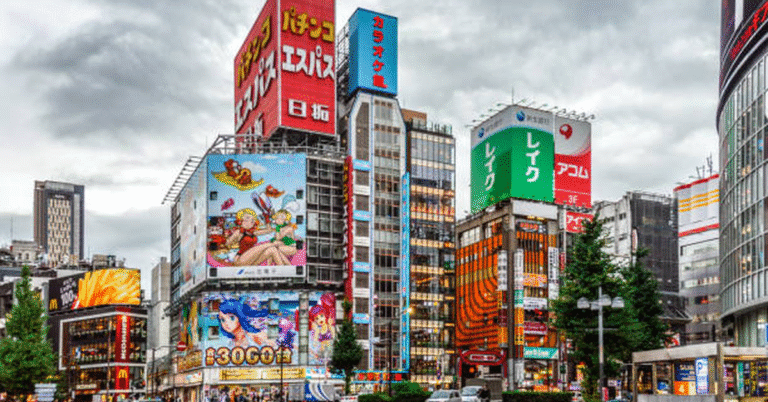
The term R&L Estate represents more than just properties or land—it signifies the broad spectrum of real estate development, investment, management, and growth. Real estate is one of the oldest and most resilient industries, and the concept of R&L Estate brings a structured view of how properties are not just physical assets but also drivers of wealth, lifestyle, and community development.
In this comprehensive guide, we will take a closer look at what R&L Estate means, its importance in personal and professional contexts, how it functions across different segments of society, its challenges, and its immense potential for the future. By exploring each layer in detail, this article aims to provide a well-rounded, clear, and deeply informative perspective on R&L Estate.
Understanding the Meaning of R&L Estate
The Concept of Estate in Modern Times
An estate traditionally referred to land ownership or a property portfolio. In modern use, it extends to residential spaces, commercial complexes, industrial properties, and even digital real estate. R&L Estate combines the real-world concept of ownership with the responsibility of leveraging properties for financial growth, lifestyle development, and societal progress.
Importance of R&L Estate in Daily Life
Real estate influences nearly every aspect of life. From the homes we live in to the offices we work in, from retail spaces we shop in to industrial hubs powering economies, R anad L Estate impacts our comfort, productivity, and long-term wealth.
The Core Segments of R&L Estate
R&L Estate can be divided into four major categories.
| Segment | Description | Key Examples |
|---|---|---|
| Residential Estate | Housing and living spaces. | Apartments, villas, condos, townhouses. |
| Commercial Estate | Business and trade spaces. | Offices, retail shops, shopping malls. |
| Industrial Estate | Properties for production and logistics. | Warehouses, factories, distribution centers. |
| Land Estate | Undeveloped or agricultural land. | Farms, plots for future construction. |
Each of these categories serves unique needs but together form the complete picture of R and L Estate.
R&L Estate in Residential Properties
Why Residential Real Estate Matters
Residential real estate is often the most relatable aspect of R and L Estate because it directly affects people’s lifestyles. A safe, comfortable, and well-planned home builds stability, provides shelter, and often becomes the biggest financial asset for families.
H3: Benefits of Residential Properties
- Secure long-term investment
- Source of rental income
- Enhances family lifestyle
- Builds personal equity
Trends in Residential R&L Estate
- Rise of sustainable housing
- Smart homes integrated with technology
- Affordable housing for growing populations
- Increased demand for gated communities
R&L Estate in Commercial Properties
The Business Perspective
Commercial properties are vital for businesses. R and L Estate in this domain refers to spaces that allow commerce, trade, and service delivery.
H3: Examples of Commercial Real Estate
- Corporate offices
- Retail spaces
- Co-working hubs
- Hospitality properties (hotels, resorts)
Value in Commercial R&L Estate
- Generates higher rental yields compared to residential
- Attracts long-term tenants (companies, retailers)
- Appreciates with urban growth
- Diversifies an investor’s portfolio
R&L Estate in Industrial and Land Properties
Industrial Real Estate
Industrial properties form the backbone of economies. Factories, warehouses, and logistics hubs ensure production and distribution run smoothly. In R and L Estate, these assets bring stability because demand for production and storage rarely declines.
Land Estate
Owning land is one of the oldest forms of wealth. Land can be agricultural, residential, or commercial in future planning. Its value often increases with urbanization and infrastructure development.
H3: Key Benefits of Land Ownership
- Potential for future development
- High appreciation value
- Flexible usage (farming, leasing, building)
Advantages of R&L Estate
For Individuals
- Builds generational wealth
- Provides financial security
- Creates opportunities for passive income
- Offers stability during inflation
For Businesses
- Strategic locations for growth
- Brand visibility through commercial spaces
- Long-term financial gains from property appreciation
Challenges in R&L Estate
Like every sector, real estate comes with challenges.
| Challenge | Description | Solution |
|---|---|---|
| Market Volatility | Prices fluctuate based on economy. | Research, diversification, and timing of investment. |
| High Capital Requirement | Large upfront costs. | Financing, joint ventures, or fractional ownership. |
| Legal Issues | Disputes over land or documentation. | Professional legal support and due diligence. |
| Maintenance Costs | Continuous upkeep required. | Budget planning and property management. |
Future of R&L Estate
The future of R and L Estate is closely tied to technology, sustainability, and globalization.
- Smart Cities: Properties will be linked to IoT devices for energy efficiency and convenience.
- Green Architecture: Environmentally friendly designs will dominate new projects.
- Digital Real Estate: Virtual spaces (like in the metaverse) will grow as parallel assets.
- Global Investments: Cross-border property ownership will become easier.
Conclusion
R and L Estate is more than the buying and selling of properties—it is a powerful foundation for wealth, community development, and economic growth. Whether in homes, offices, factories, or land, real estate continues to shape lives and futures. By understanding its types, benefits, challenges, and opportunities, individuals and businesses can make informed decisions that lead to stability, prosperity, and long-term success.
FAQs
1. What is R&L Estate?
R&L Estate refers to the broad field of real estate, including residential, commercial, industrial, and land-based properties.
2. Why is real estate considered a good investment?
It provides long-term financial security, rental income, property appreciation, and diversification of wealth.
3. What are the main types of R&L Estate?
The four main categories are residential, commercial, industrial, and land properties.
4. What challenges exist in R&L Estate investments?
High capital requirements, market fluctuations, legal disputes, and maintenance responsibilities are some key challenges.
5. What is the future of R&L Estate?
The future lies in smart cities, sustainable housing, globalized ownership, and digital property development.




